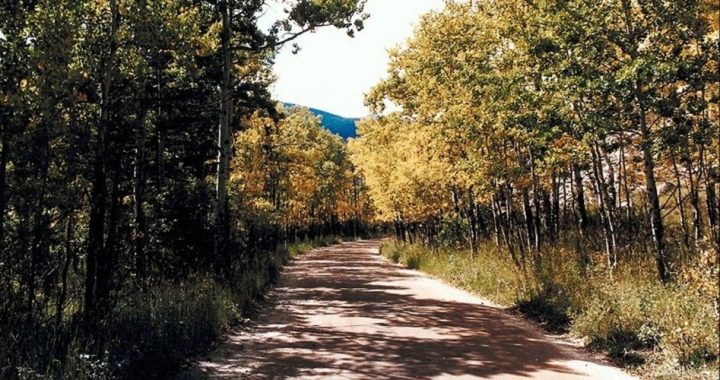
The national media are beginning to pay attention to movements threatening to secede from existing states and form their own new ones. There’s even a competition between efforts in western Maryland, Michigan’s Upper Peninsula, northern California’s Siskiyou County, and parts of southern Oregon to be the first to become the country’s 51st state.
None is as far along, however, as the effort pushing to win the honor for the state of North Colorado. Entitled “The 51st State Initiative,” the endeavor to create a new state in Colorado was driven by decisions of the Democratic majorities in the state house, senate, and governor’s mansion to impose the first gun controls on private citizens in 10 years, mandates to double the energy derived from environmentally “green” projects, and a general feeling of disregard for rural Colorado, as the populations in the state’s major cities have expanded. Spokesman for the Colorado initiative, Weld County Commissioner Sean Conway, said:
I’m a third generation Coloradoan. But I will tell you, the state I grew up in, the state that I’ve come to love, is slowly and surely slipping away to something I don’t recognize. I think that is what’s fueling this movement.
It wasn’t very long ago that enough Colorado politicians came from rural Colorado as to give some balance to debates over controversial issues. Roy Romer, a former Democratic governor, was raised on a farm, and Wayne Allard, a former Republican senator, grew up on his family’s ranch. Said Conway:
They had a wider view of Colorado in its totality. Today we have the governor of Denver….
We found ourselves down at the capital, quite frankly, being ignored. We said, we need to figure out a way to send a message to Denver, because they’re not listening.
A political science professor at Old Dominion University in Virginia, Kimberly Karnes, put the matter succinctly:
Issues such as energy policy, gun control, taxes, and social issues often break on a rural-urban divide.
So if the state legislature produces a policy that a majority of residents in the urban … areas prefer, it leaves rural residents feeling like they are [being] ignored….
Over time [this] can build to resentment and lead to the choice of extreme response, such as secession.
The position expressed, however, by the Colorado initiative, is hardly extreme. On its website the first paragraph quotes the Declaration of Independence:
When in the Course of human events, it becomes necessary for one people to dissolve the political bands which have connected them with another, and to assume among the powers of the earth, the separate and equal station to which the Laws of Nature and of Nature’s God entitle them, a decent respect to the opinions of mankind requires that they should declare the causes which impel them to the separation.
It then reminds its supporters that there are already 11 counties in northeast Colorado that have referred a secession initiative to their voters on November 5. But it also notes that the initiative has a long hard hill to climb before North Colorado becomes a reality: “The creation of a new state won’t be easy. Many say it can’t be done. However, just because others have failed doesn’t mean we won’t be successful.”
It’s going to take strong local support to pass the initiative in November. Once passed, it moves to the dreaded Denver statehouse for approval. It is highly unlikely that such a move will be ignored as readily as rural protestations were over gun control and energy mandates.
If the state legislature approves, then the Colorado constitution must be amended to allow the new state. After that, the initiative moves on to Washington where Congress has the final say. To say that it would be controversial is a grand understatement, not the least because it would add two more senators to the Senate.
But in a note of encouragement, the website says, “We are starting to hear from disenfranchised groups [from] all over the country. We are a truly divided nation. It is possible, if not likely, that we may not be the only group requesting from Congress the formation of a new state.”
Aside from nascent movements around the country beginning to press for separate statehood, there is also the history of previous successful attempts. Maine was once part of Massachusetts, Kentucky grew out of Virginia, and West Virginia separated from Virginia. But the last time such an event occurred was 1863.
Michael Trinklein, author of Lost States, is guardedly optimistic based upon his study of previous attempts:
It’s easy to write it off as a silly story, because we all intuitively know that the politics [involved make it] an extreme long shot.
In reality, most of American history we’ve spent changing the map, adding new territory, deciding how to slice it up, deciding what territories to keep and not keep.
There were hundreds of efforts to create new states from existing ones, including failed attempts to create states of West Florida, Texlahoma, Montezuma, Rough and Ready, and Yazoo. There was Transylvania in the Appalachians, efforts to create the state of South Jersey, and the Gold Rush territory of Nataqua.
In 1896, a group of Long Island businessmen pushed to create the state of Long Island. In 1859, Southern California came close to seceding, while just prior to the outbreak of World War II, parts of northern California and Oregon tried to create the state of Jefferson.
The model the Colorado initiative is following is the drive in the early 1990s to form a separate state from 12 Kansas counties, to be called the state of West Kansas. The movement ended when concessions were granted from the state government, but Conway said: “That may be a similar model [for us] here.”
There is also the momentum from the unexpected success in recalling two Colorado state senators, including the senate president, over the onerous gun control laws. And there is still pending a lawsuit by 55 Colorado county sheriffs challenging the constitutionality of those laws.
Professor Karnes says the chances for success are between slim and none. Even if successful,
The promised conservative or libertarian utopia these residents so often seem to want [would] still be a part of the United States of America, meaning it answers to and must work within the U.S. system.
That doesn’t mean that there can be no good coming out of efforts to create the state of Northern Colorado, even if they fail. The message will have been delivered to state legislators: Don’t ignore us! And those chastened by the successful recall of two of their own will no doubt dampen the enthusiasm of those remaining for further incursions into citizens’ liberties.
It will also serve as inspiration for those who remember that, as the country’s 28th president, Woodrow Wilson, said:
The history of liberty is a history of resistance. The history of liberty is a history of limitations of governmental power, not the increase of it.
A graduate of Cornell University and a former investment advisor, Bob is a regular contributor to The New American magazine and blogs frequently at www.LightFromTheRight.com, primarily on economics and politics. He can be reached at [email protected].



